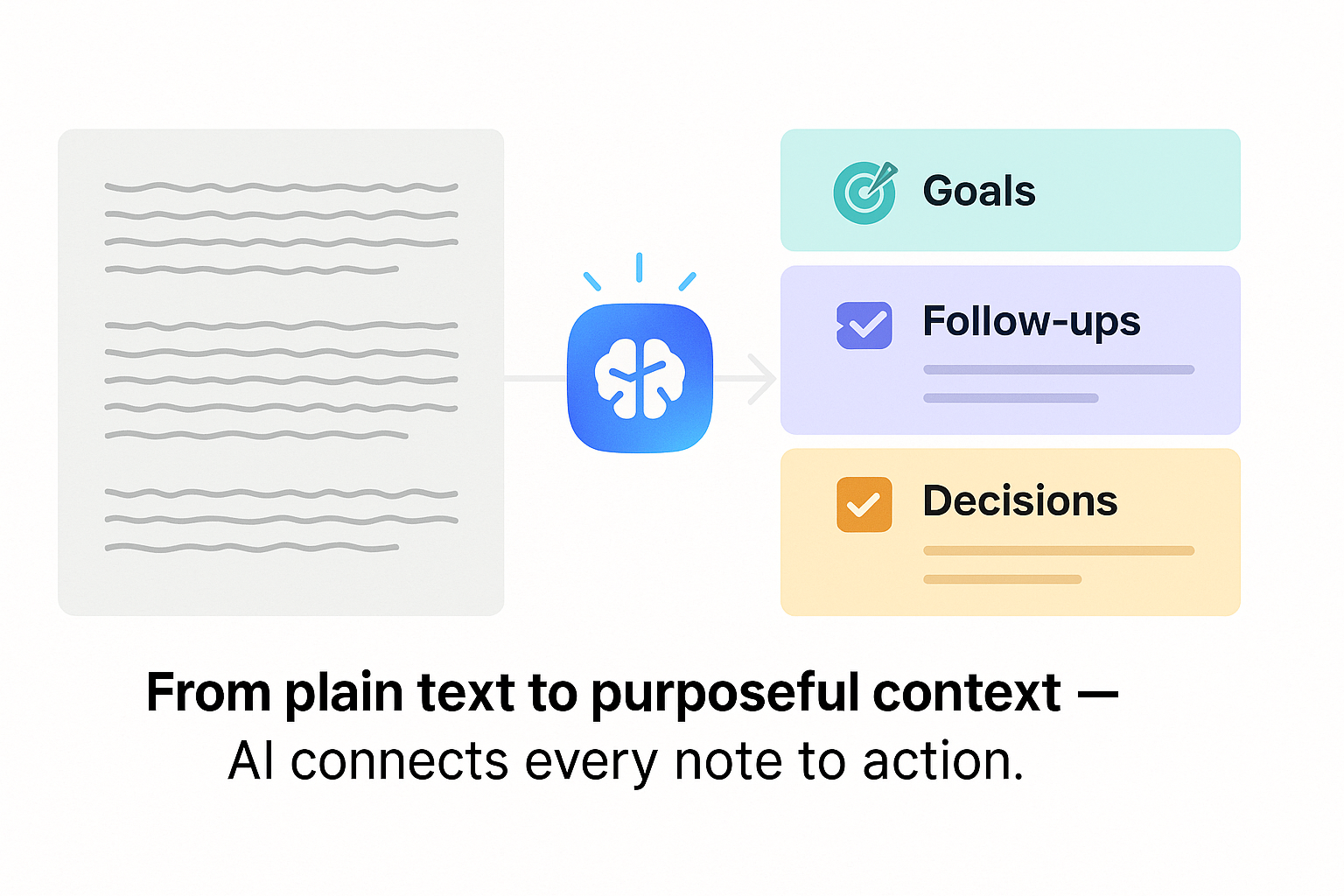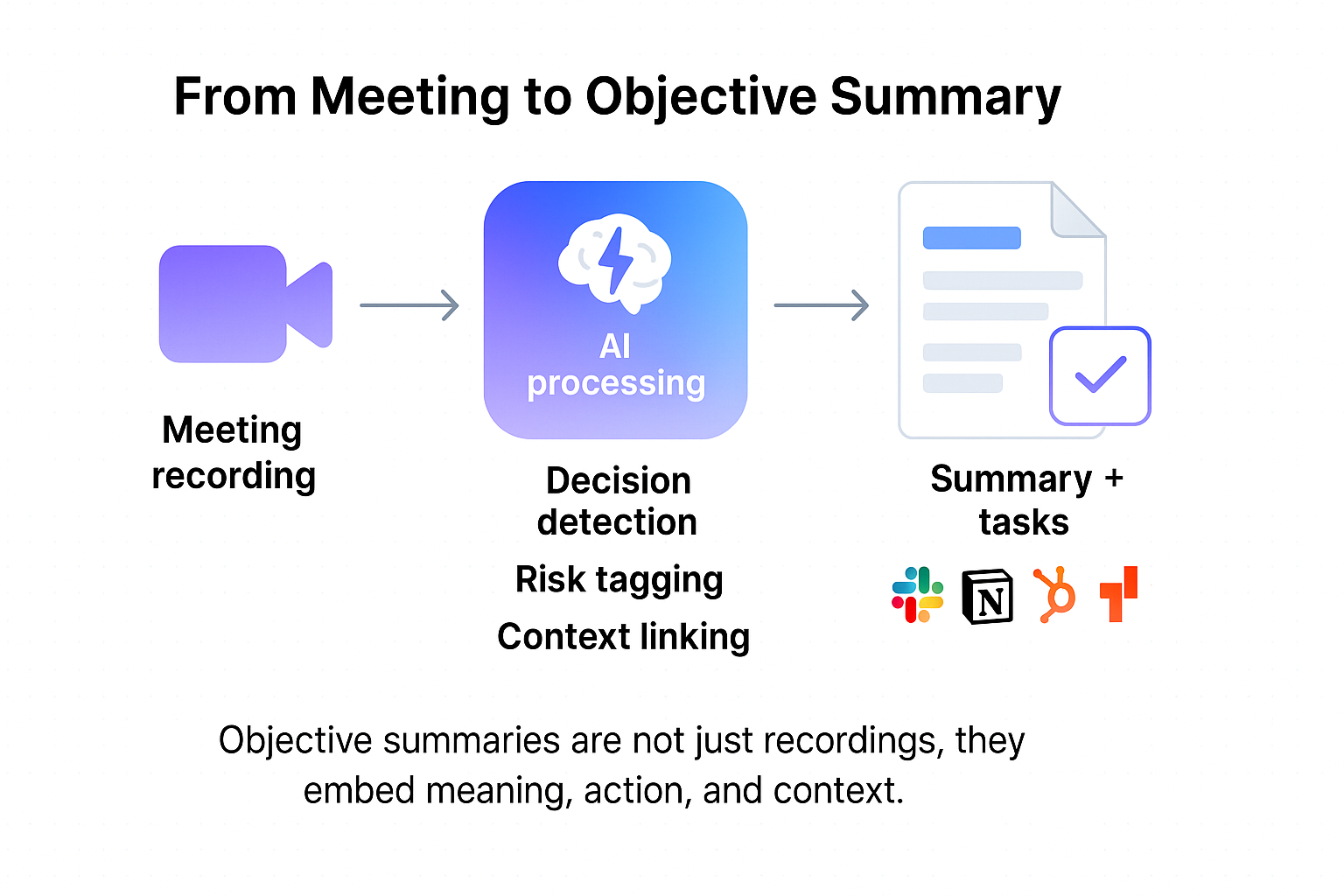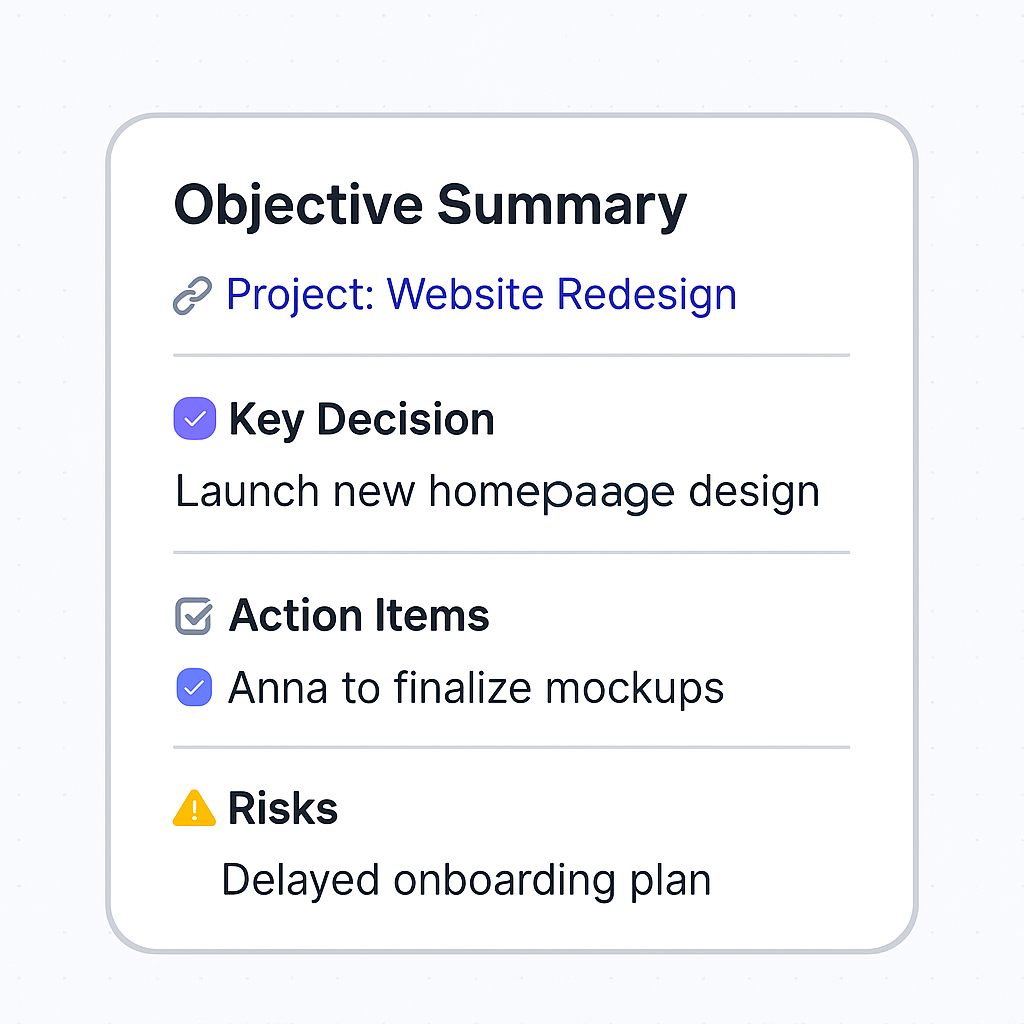 Sami AZ
Sami AZ
A typical meeting summary is a flat recap: who spoke, what topics were covered, and perhaps some bullet points. But in practice, teams need contextual insight, not just what was said, but why it matters, what decisions were made, and what follow-ups must happen next.
In 2025, AI summaries are evolving beyond transcripts into objective summaries, summaries enriched with meaning, links to goals, and embedded action. These go from being a record to being a tool.
In this article we will explore:
An objective summary is a structured, concise digest of a meeting that doesn’t just record what was said, it highlights:
In other words, an objective summary aims to weave meaning into transcripts. It helps the team see the forest instead of just reading trees.
Unlike flat summaries that list points, objective summaries connect dots.
Let us contrast the two styles in a narrative form.
Flat summary style example:
“Meeting with Acme. Discussed product roadmap. Team shared feedback. Next meeting scheduled. Budget constraints were mentioned.”
It captures topics, but lacks structure, follow-up clarity, or project context.
Contextual summary example (AI-generated objective):
“In today’s Acme meeting, the team committed to shipping Feature X by October 15, pending design approval. A blocker remains on API integration. Marketing will start messaging draft by next Friday. Budget risk flagged due to vendor price increase. Project aligns with Q4 growth target. Next check-in scheduled with engineering on Tuesday.”
Here you gain clarity: task, owner, deadline, risk, goal link.
The difference is that the objective summary ties to business outcomes and project goals, not just meeting content.
When follow-up items lack context, team members hesitate or misinterpret responsibility. Objective summaries reduce that.
In hybrid or asynchronous teams, many people may not attend. Context anchors summaries so absent members still understand decisions with rationale.
Decisions tied to strategic goals are easier to prioritize than standalone tasks. AI can surface which tasks matter more.
A summary that records why a decision was made makes deviations easier to detect.
When objective summaries tag risks or goals, you can analyze themes across meetings (e.g. frequent blockers, recurring topics).
Teams that switch from flat to objective summaries often see clearer alignment and fewer missed follow-ups.
Let us walk through how an AI meeting tool like Klu would create objective summaries:
This pipeline transforms a recording into a living decision artifact.
Let’s examine hypothetical (but realistic) use cases where objective summaries shine.
At the start of a quarter, the sales lead meets with the team:
Daily standup:
Customer meeting:
In each case, objective summaries convert talk into trackable outcomes.

No system is perfect. Be aware of these potential pitfalls:
Good systems include human review, feedback, and correction loops.
Klu is architected to make objective summaries standard:
Teams using Klu benefit from summaries that scale with their complexity rather than degrade.

Q1: Are objective summaries always more accurate than plain summaries?
Not always. They rely on accurate transcription and good metadata. But their value lies in surfacing meaning, not perfect word match.
Q2: Do I need to provide goal mapping or project integration?
Yes. The richer the metadata and connections (CRM, roadmap, tags), the better context the AI can add.
Q3: Can objective summaries replace meeting transcripts?
They complement transcripts. You can still access full text, but summaries guide action and focus.
Q4: How long does it take for AI to produce an objective summary?
Modern systems produce summaries within seconds to a couple of minutes after meeting end.
Q5: Can I correct or override AI suggestions?
Yes. Systems should allow edits before distribution, so teams validate and refine results.
Q6: Do objective summaries support multi-language meetings?
It depends on the AI engine. Some support multiple languages and translation; context models may lag in less supported languages.
Ready to level up your meeting summaries from flat to objective? Try Klu’s AI meeting assistant and see how it brings clarity, context, and action to every meeting.